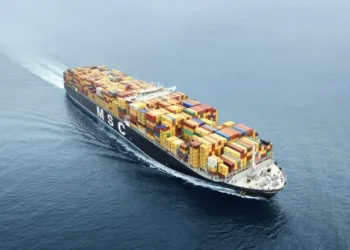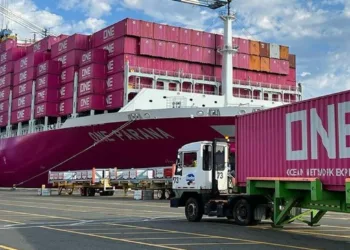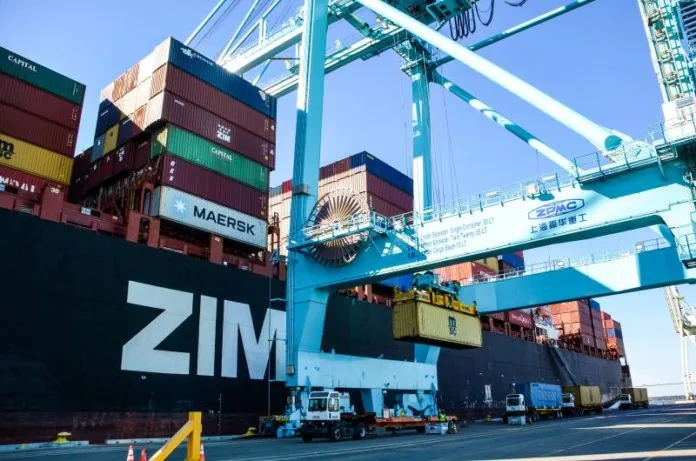Amid rising tariffs, import cargo volume at U.S. container ports is anticipated to decline steadily through the end of this year following a near-record summer peak, according to the nation’s biggest retailers.
Major U.S. container ports handled 2.36 million twenty foot equivalent units (TEUs) in July, according to the National Retail Federation’s Global Port Tracker. That was a gain of 20.1% from June as retailers brought in merchandise ahead of tariffs set to take effect in August. It was also 1.8% higher year-over-year, and the second-busiest month since 2.4 million TEUs in May 2022.
“We have seen the implementation of reciprocal tariffs across the globe, with a number of key trading partners being subjected to tariffs higher than the earlier 10% tariffs,” NRF Vice President for Supply Chain and Customs Policy Jonathan Gold said, in a release. “We also continue to see more and more sectoral tariffs impacting a wider scope of products. Retailers have stocked up as much as they can ahead of tariff increases, but the uncertainty of U.S. trade policy is making it impossible to make the long-term plans that are critical to future business success.
“These tariffs and disruptions to the supply chain are adding costs that will ultimately lead to higher prices for American consumers.”
A federal appeals court in August ruled against President Donald Trump’s use of the International Emergency Economic Powers Act (IEEPA) to impose tariffs, but left them in place while the ruling is under fast-track appeal to the Supreme Court.
Also, Trump again pushed back by 90 days a deadline for higher tariffs on China to November 10 so trade negotiations could continue. India wasn’t so fortunate, as Trump announced an additional 25% tariff taking that country’s rate to 50%.
The retail group estimated August volume ahead of reporting at 2.28 million TEUs, off 1.7% y/y but above the projected 2.2 million TEUs prior to the China pause and India levies.
September volume is forecast at 2.12 million TEUs, down 6.8% y/y; October at 1.95 million TEUs, off 13.2%, and November at 1.74 million TEUs, a decrease of 19.7%. December traffic is projected at 1.7 million TEUs, a slide of 20.1% and the slowest month since 1.62 million TEUs in March 2023.
The NRF added that volumes will also be weakened by the early peak shipping season, and late 2024’s frontloading ahead of a strike by East Coast dockworkers.
Volume totaled 12.53 million TEUs through the first six months of this year, a gain of 3.6% y/y. Projected full-year volume of 24.7 million TEUs is down 3.4% from 25.5 million TEUs in 2024.
The NRF said January 2026 traffic is forecast at 1.8 million TEUs, a drop of 19.1% from the previous-year month.
Find more articles by Stuart Chirls here.
Related coverage:
Trans-Pacific container rates rally despite trade war’s effects
Ex-FMC chief warns: U.S. maritime push needs deeper look
Container mishap shuts down Port of Long Beach pier
New ‘green’ report for Port of Long Beach on-dock rail
The post Retailers see import decline through end of 2025 appeared first on FreightWaves.




















